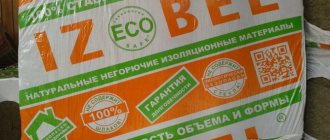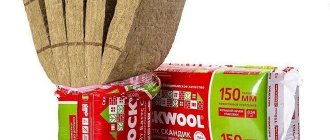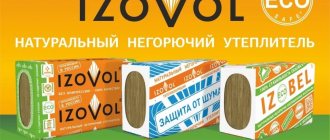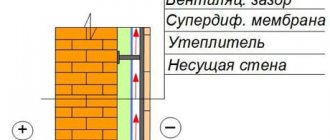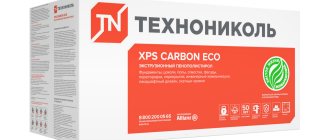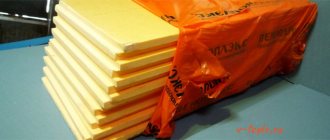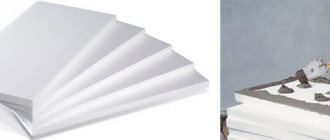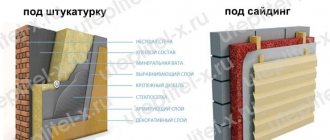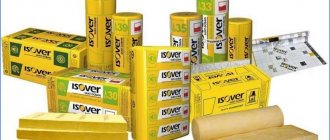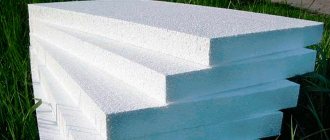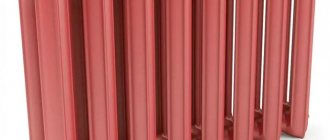The technology of installing pipeline systems transporting different liquids has always taken into account the harsh conditions of most regions of Russia. These engineering networks have always been insulated. In the not so distant past, glass wool and its modifications were the main material designed to prevent freezing of pipes. And in our time, there is a tendency to use this insulation during the laying of heating systems, hot and cold water supply, sewage.
This happens, in all likelihood, from a lack of information among those who make such a decision, because there is no economic benefit from the use of mineral and other wool because of its hygroscopicity. Therefore, it is worth paying attention to modern thermal insulation materials, one of which is energy flex for pipes.
Content
- What is energy flex insulation?
- Energoflex: technical characteristics
- How is energy flex insulation applied?
- Insulation for pipes Energoflex
- Energoflex super
- Energoflex Super Protect
- Energoflex Black Star
- Energoflex Black Star Split
- Energoflex Black Star Dact and Black Star Dact Al
- Energoflex Super TP
- Additional materials required for the installation of heat insulators:
- Insulation energoflex: tips for use
- Outcome
- Watch a video about a new new type of insulation from Energoflex® Super SK
Energoflex is extremely flexible and strong
What is Energoflex

Heaters Polyethylene foam (PPE)
"Energoflex" is a material made of low-density high-pressure polyethylene foam. The technological process involves the use of the LDPE extrusion method and simultaneous foaming with a butane-propane mixture. When making "Energoflex", the use of freon is completely excluded.
This technology makes it possible to obtain a structure with closed cells filled with air, which determines its high thermal insulation properties. Its thermal conductivity is 0.038 W / (m * K), which allows you to save 90% of thermal energy. The material can be used in the operating temperature range of –40 - + 95 ° С.


The unique technical characteristics of energoflex distinguish it favorably from other heat-insulating materials. The structure of the material almost completely excludes moisture absorption, which, among other things, protects the insulated parts from corrosive processes.
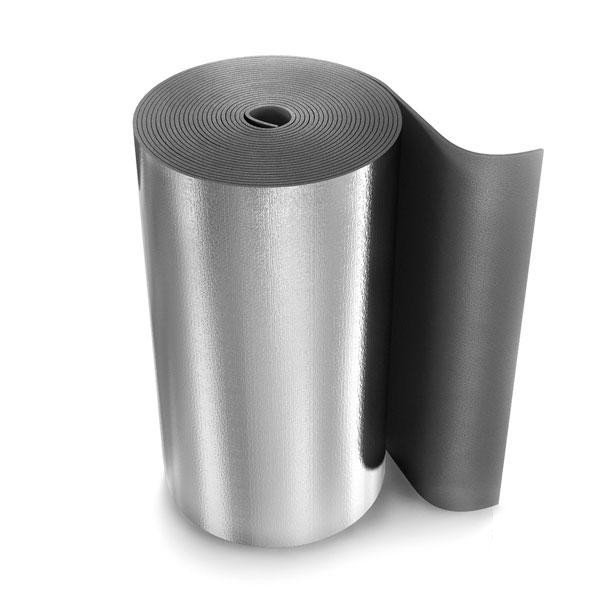

Due to the low vapor permeability, stable heat-insulating characteristics of the insulation for the energy flex pipes are achieved throughout the entire service life (up to 25 years). The design of the material excludes its self-sealing during installation, which avoids the formation of condensation. Energoflex is highly resistant to a number of aggressive building materials, including cement, concrete, stone, brick, gypsum and lime.
What is energy flex insulation?
Energoflex is a new generation insulation. It is specially designed for laying sewage systems, hot water supply, heating and is designed to protect them from temperature extremes and freezing.
Its basis is foamed polyethylene. In the process of manufacturing this material, a propane-butane mixture is fed into it under pressure.
EThis allows you to get a high-quality heat insulator with a porous structure at the output.
The peculiarity of the energy flex is that these cells are closed and air is conserved in them, which, as you know, is the best heat accumulator.
Energoflex is sold in special packages that are convenient for transportation.
Energoflex: technical characteristics
- Resistant to mechanical damage and deformation;
- Temperature range of use from -40 * С to + 95 * С;
- Flammability group G2 (moderately flammable);
- Water vapor diffusion resistance - more than 3000;
- Lightweight and flexible for maximum ease of installation;
- Has an increased resistance to heat transfer, which entails lower costs for the device and operation of pipelines;
- Resistant to aggressive environments;
- Absolutely not hygroscopic;
- Has increased durability;
- Long lasting, not subject to decay. Service life 20-25 years;
- Effectively reduces structure-borne noise;
- It is an environmentally friendly material. When working with him does not require personal protective equipment.
Insulation materials
54 votes
+
Voice for!
—
Against!
Energy saving technologies have become a guiding star of the 21st century. People learn not just to waste the planet's natural resources uncontrollably, but to use them wisely. Various heaters and insulation schemes are used both in industry and at the household level. Thermal insulation of equipment and various units is a technological necessity. Insulation of pipelines is laid to maintain the temperature of the coolant - be it superheated steam or coolants.
Content
- Types of pipeline insulation materials
- ROLS ISOMARKET products video
- ENERGOFLEX is a Russian product
- Technical characteristics of thermal insulation ENERGOFLEX Pipe insulation
- Roll and board insulation
Types of pipeline insulation materials
Insulation material is used to maintain the required coolant temperature. It is used for thermal insulation:
- air ducts of ventilation systems;
- freezer pipes;
- sewer pipes;
- hot and cold water supply pipelines;
- central heating pipelines.
Various materials are used for thermal insulation of pipelines: stone wool, polyurethane foam, expanded polystyrene, penoizol, foamed polyethylene. Due to the ease of installation and affordability, the latter, in turn, occupies up to 90% of the market in domestic use.
ROLS ISOMARKET products
ROLS ISOMARKET produces thermal insulation under several brands: Energoflex® (ENERGOFLEX), Energofloor® (Energoflor), Energopack® (Energopak). The company's plant is equipped with equipment from KraussMaffei Berstorff GmbH - one of the leading manufacturers of extrusion technology for polymers.
Thermal insulation is available in the form of flexible tubes, mats and cloths.
The material has great elasticity, high resistance to aggressive environments. Provides additional protection of metal pipes from corrosion, protects pipelines during installation and operation.
The company produces more than one hundred standard sizes of insulating pipes and about two dozen standard sizes of sheet and roll material. A system of branded accessories has also been developed for ease of installation.
ENERGOFLEX is a Russian product
In September 2000, the first Russian plant for the production of technological insulation from foamed polyethylene was launched. Production is a joint project of STROYCOM and LIT Information Technology Plant. The company's products have received the necessary quality certificates from the State Construction Committee of Russia and international ISO quality certificates. The brands produced have excellent performance properties that are not inferior to foreign counterparts, meet the requirements of fire and hygienic safety. Thermal insulation material is produced from high pressure polyethylene (LDPE). The structure of the material has a closed cellular structure, which makes the material an excellent heat insulator.The material has low thermal conductivity and good resistance to moisture penetration, effectively reduces structure-borne noise, does not rot. When working with him, there is no need to use personal protective equipment. It is widely used for insulation of heating, ventilation systems, water supply and air conditioning systems. It is a prime example of good quality at a reasonable price.
Technical characteristics of thermal insulation ENERGOFLEX
The technical characteristics of the thermal insulation depend on the type of insulation material. Let's consider each in detail.
Pipe insulation
ENERGOFLEX pipe insulation is available in three colors: gray, red and blue, for easy identification of pipelines during installation. Thermal conductivity of lambda insulation at an ambient temperature of + 20 ° C is 0.036 W / m ° C. Thermal insulation has a wide range of operating temperatures of the coolant from -40 ° C to + 100 ° C. Fire characteristics meet GOST 30244-94 “Building materials. Methods of testing for flammability "Refers to the group of burning materials G1.
ENERGOFLEX is an environmentally friendly and safe material, does not contain chlorofluorocarbons and freon. The density of the material is 25kg / m3 ± 5kg.
Roll and board insulation
Roll insulating material is produced with a thickness of 3-20mm. Thermal conductivity l - 0.036-0.038 W / m ° C. The density of the material is 20 ÷ 30kg. The adhesion of the adhesive layer to the metal surface is at least 300g / cm2. Refers to the flammability group G1. The operating temperature of thermal insulation is -40 + 80 ° С.
The modulus of elasticity under a load of up to 2 kPa is 0.39 MPa, under a load of 5 kPa - 0.77 MPa. The tensile strength in the longitudinal direction is 0.2 MPa, in the transverse direction - 0.1 MPa.
The relative compression under a load of up to 2 kPa is - 0.09 MPa, with a load of 5 kPa –0.2 MPa.
The water absorption of the material by volume is no more than 2%. ENERGOFLEX is also a good sound insulator. The percentage of noise absorption at frequencies of 200-1250 Hz. is 25-55%, at frequencies 1600-3600Hz - 30-60%.
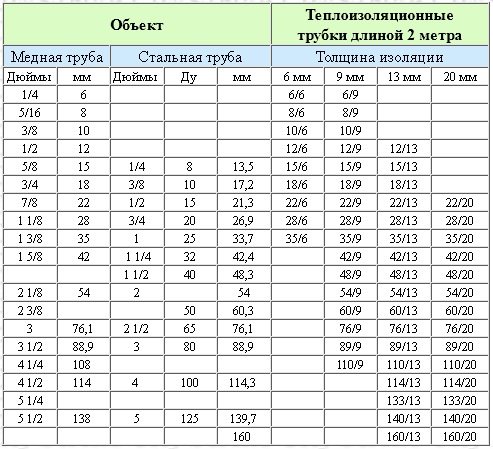

Preparation of installation of thermal insulation ENERGOFLEX
Thermal insulation is designed for outdoor and indoor use at ambient temperatures from -40 ° C to + 70 ° C and relative humidity up to 100%. The manufacturer does not recommend using thermal insulation in direct sunlight. When working with insulation, use only high-quality materials, accessories, fixtures and tools.
The surface of the insulation must be solid, rough, without depressions, dents and holes. If there is dirt on the thermal insulation, it must be removed with a cleaner before installation.
The surface of the piping must be free of contamination, oil stains and rust. Clean contaminated surfaces with ENERGOFLEX cleaner or other cleaning agent. When installing thermal insulation on air ducts of ventilation and air conditioning systems, they must first be coated with an anti-corrosion coating. When installing thermal insulation in two or more layers, the installation must be done with a seam offset.
Heat insulation of pipelines and equipment should be carried out in a disconnected state. You can continue to operate the system no earlier than 24 hours after installation.
When insulating pipes outdoors, it is necessary to choose insulation with a covering material in accordance with SNiP 2.04.14-88.
During installation, it is forbidden to stretch the thermal insulation in the longitudinal or transverse direction. It is recommended to compress it slightly.
Tools and fixtures
For the installation of thermal insulation, special tools and devices will be required.
- miter box ENERGOFLEX - for setting the angles of rotation of pipes and for cutting out corner wedges;
- long blade knife (~ 300mm) - for cutting roll material and large diameter pipes;
- short knife (~ 70mm) - for small diameter pipes;
- brush - for applying adhesive;
- ring punches - for making holes in the insulation;
- building ruler;
- roulette;
- smooth spatula - for applying glue;
- pen or pencil.
Bonding insulation ENERGOFLEX
Before applying ENERGOFLEX adhesive, it must be thoroughly mixed. It is recommended to use glue in a container of 0.5 liters. The adhesive is applied in a thin layer to both glued surfaces. Connect the surfaces five minutes after applying the glue. If the glue on the surface is dry, it is reapplied. The use of glue is recommended at an ambient temperature not lower than + 17 ° С, optimally - + 20 ° С. If the glue has thickened, it can be diluted with ENERGOFLEX thinner.
Installation of thermal insulation ENERGOFLEX
When installing pipes for thermal insulation, various methods of work are used.
Tension method. Recommended for use with pipes that have not yet been installed. ENERGOFLEX is put on the pipes, the ends of the insulation are glued together.
If the pipes need to be welded, the thermal insulation should be displaced from the welding point by 250-300mm and welded. Glue the ends of the insulation.
Slitting method. Thermal insulation is installed on already installed piping systems. The thermal insulation tube must be cut with a short-blade knife along the axis, mounted on the pipeline. Glue the cut and additionally secure it with a clamp, glue the ends of the tubes together.


Installation of rolls. Thermal insulation of pipes with a diameter of over 160 mm is carried out with roll material. This installation method is also used for the installation of several layers of thermal insulation. To do this, measure out the required circumference, cut off the required length and width section from the roll, and carry out installation.
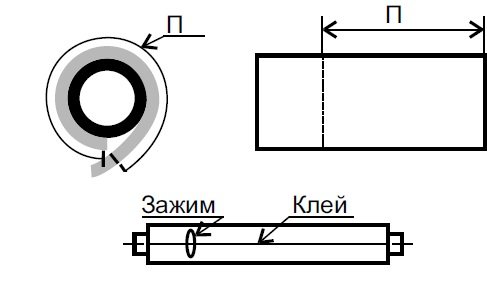

Wedge cut method. This method must be used on pipelines with a diameter of up to 90 mm. In the insulation tube, wedges are cut from the inside using a miter box at an angle of 22 ° or 45 °, depending on the angle of rotation. The distance between adjacent wedges is 5-10 mm. All cuts are glued and held together with a clamp.
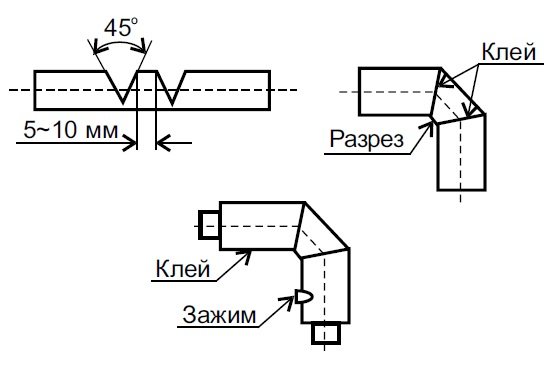

Bevel cutting. The method is used to obtain right angles of rotation. Subsequent operations are similar to the previous methods.
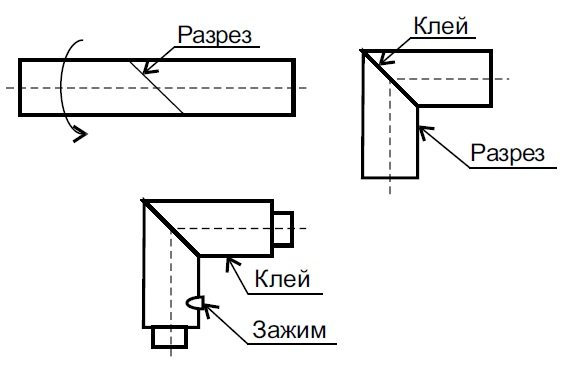

Diameter marking.
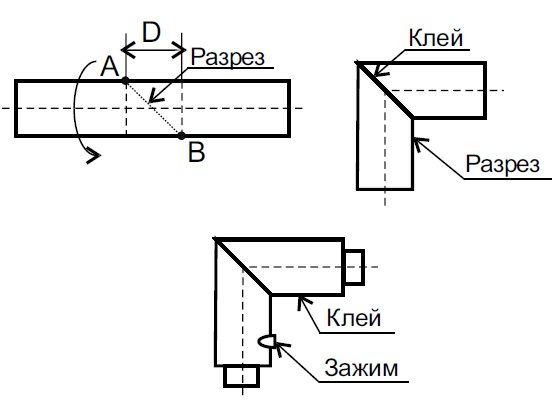

For bends of pipes with a diameter of 90 mm and above, it is recommended to use roll insulation.
To do this, cut out two half-sectors ABCD, which are glued along the line L, the thermal insulation is installed on the pipe and the inner corner is glued. The remainder is cut perpendicular to the pipe.


From the whole variety of insulating materials for pipelines, you can easily choose the one that you need in this particular case. The use of thermal insulation will save money, maintain the required temperature of the coolant or prevent the fluids in the pipeline from freezing, and prevent the appearance of condensation.
How is energy flex insulation applied?
This material is resistant to aggressive media such as cement, lime, concrete. This makes it possible to use a wide range of energoflex in construction and installation works.
Long-burning boilers must be chosen based on several rules. Which ones, you can find out in this article. Do you want your home to retain heat better? See our article on how to properly insulate walls.
Find out what to consider before purchasing an electric heating boiler.
It is designed to protect equipment from condensation, which guarantees the prevention of corrosion. When laying the heat insulator, it is not recommended to stretch it; the seams should be glued with special self-adhesive tapes. There is a special glue for sealing the joints. It is fixed to the pipes with the help of Energoflex plastic clamps.
Energoflex can be of various diameters and thicknesses.
Material cost
The cost of insulation "Energoflex" is quite democratic in comparison with other similar materials. It depends on several factors. This is the structure of the material, its modification, the form of release. Also, the size of the heat insulator affects the price. Since the material in most cases is sold in kits, the cost will also depend on the number of components in the kit.
For example, insulation for Energoflex pipes is measured in running meters. The components of its price will be the diameter and thickness of the product.
| Thickness, mm | Diameter, mm | price, rub. |
| 6 | 15-35 | 10-20 |
| 9 | 15-160 | 15-250 |
| 12 | 15-160 | 18-270 |
Sheet insulation can be purchased at a cost of 111-350 rubles. per m2. A running meter of self-adhesive tape 48 mm wide will cost from 105 to 300 rubles.


Energoflex super
Energoflex Super is available in several versions. Release form: sheets 10, 13 and 20 mm thick. and tubes 1 and 2 m long. with a technological notch. The material is highly resistant to chemical attack.
You can find out about the properties of induction heating boilers in this article: https://prootoplenie.com/otopitelnoe-oborudovanie/kotlu/indukcionnyjj-kotel-otopleniya.html See how it is recommended to carry out floor insulation in a frame house.
Do you think that insulating a balcony is an expensive process? In order not to think in vain, find out how much it costs to insulate the balcony.
Sheet is designed for insulating pipes of large diameter, it is an effective steam and moisture insulator. Meets all standards of sanitary and environmental safety. Sheets Energoflex Super is recommended to be used as the second and subsequent layers when installing multilayer thermal insulation.
Tubes of 1 m. Length can be from 15 to 42 mm in diameter. with a wall thickness of 9 mm. Each tube has a sticker on which a barcode is applied and the size of the material is indicated.
They are intended for retail stores, have increased thermal insulation properties, are easy to install due to their flexibility and technological notch.
The Energoflex tube 2 m long is intended for heat and sound insulation of internal engineering systems. They are distinguished by increased strength, moisture resistance, protect against condensation, corrosion, freezing.
Energoflex Super Protect is equipped with an additional coating that significantly increases its technical characteristics
Material advantages


The benefits of thermal insulation
It is not for nothing that Energoflex insulation takes first place in the list of the most effective heat-insulating materials for pipes. It has a number of advantages that make it stand out from its peers. But do not forget about the main functions that any insulation performs:
- Protection of the pipe against corrosion, which is a consequence of the harmful effects of external factors (condensation, rain, precipitation, etc.);
- Temperature regulation in winter. It is necessary in order to avoid freezing of the water supply system with subsequent rupture due to the expansion of ice.
- Reducing heat loss in parts of heat supply systems that are located outside.
But in addition to these standard functions, Energoflex surprises with a number of advantages that are not characteristic of many heaters:
- resistance to various chemical influences;
- prevents the development of bacteria;
- excellent strength indicators, which eliminate the need for additional pipe protection;
- ease of installation, which does not require special knowledge and skills;
- harmless to the environment;
- safety for human health;
- lack of toxins;
- high level of corrosion protection;
- high flammability class, minimizing the likelihood of ignition;
- the ability to reduce energy and resource consumption;
- maintaining the required temperature in the pipes.
Important! Energoflex has a fairly wide operating temperature range. The material functions perfectly at temperatures from -40 to 100 degrees. At the same time, all properties and characteristics remain at the same level.
One of the main advantages seems to be a wide range of materials for various needs. From the manufacturer, you can find insulation for insulating water supply pipes, sewers, heating units or ventilation. The required diameter of Energoflex pipes is always available.
Energoflex Super Protect
Designed to protect pipes in heating and hot water systems, which are laid in enclosing structures, floors and walls. Release form: 10 meter tubes with polymer coating in blue and red, laid in bays.
Feature of the material: it has no technical notch. Guaranteed service life of 25 years. Flammability class G1 (slightly flammable).
The polymer coating increases the strength of the heat insulator by 50% and acts as a compensator during thermal expansion of pipes.
Energoflex Super (tubes)
EnergoflexTM Super tubes and rolls
Thermal insulation for heating and water supply systems
Energoflex® Super closed cell polyethylene foam tubes are excellent for heat and sound insulation of internal engineering systems. The material is resistant to aggressive environments, easy to install and absolutely safe for humans and the environment.
| Maximum working temperature | µ-factor | λ0 W / (m ° C) |
| + 95 ° C | ≥3 000 | ≤0,035 |
| Specifications |
| Characteristic | Value | Methodology | |
| Maximum operating temperature, ° С | +95 | GOST EN 14707-2011 | |
| Thermal conductivity coefficient, λ W / (m ° С) | at 10 ° C | at 20 ° C | at 30 ° C |
| 0,038 | 0,039 | 0,040 |
PACKAGING
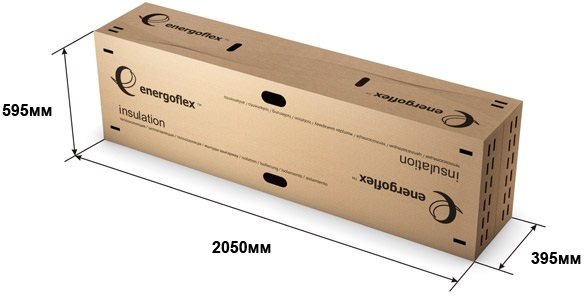

| Packed in cardboard boxes 2050 x 595 x 395 mm. |
| Insulation thickness, 6 mm | Insulation thickness, 9 mm | ||||||
| standard size | amount in a package, m | gross weight, kg | packing volume, m3 | standard size | amount in a package, m | gross weight, kg | packing volume, m3 |
| 15/6-2 | 440 | 7,77 | 0,482 | 15/9-2 | 356 | 9,85 | 0,482 |
| 18/6-2 | 400 | 7,95 | 0,482 | 18/9-2 | 284 | 9,04 | 0,482 |
| 22/6-2 | 320 | 7,55 | 0,482 | 22/9-2 | 240 | 8,81 | 0,482 |
| 25/6-2 | 244 | 6,71 | 0,482 | 25/9-2 | 200 | 8,23 | 0,482 |
| 28/6-2 | 240 | 7,05 | 0,482 | 28/9-2 | 168 | 7,71 | 0,482 |
| 35/6-2 | 160 | 6,10 | 0,482 | 35/9-2 | 136 | 7,49 | 0,482 |
| 42/9-2 | 110 | 7,24 | 0,482 | ||||
| 45/9-2 | 94 | 6,76 | 0,482 | ||||
| 48/9-2 | 74 | 6,00 | 0,482 | ||||
| 54/9-2 | 70 | 6,16 | 0,482 | ||||
| 60/9-2 | 66 | 6,27 | 0,482 | ||||
| 64/9-2 | 60 | 6,12 | 0,482 | ||||
| 76/9-2 | 48 | 5,84 | 0,482 | ||||
| 89/9-2 | 40 | 5,69 | 0,482 | ||||
| 110/9-2 | 26 | 4,99 | 0,482 | ||||
| 114/9-2 | 26 | 5,08 | 0,482 | ||||
| 133/9-2 | 16 | 4,27 | 0,482 | ||||
| 160/9-2 | 12 | 4,05 | 0,482 | ||||
| amount in a package, m | gross weight, kg | packing volume, m3 | standard size | amount in a package, m | gross weight, kg | packing volume, m3 | |
| 15/13-2 | 240 | 10,82 | 0,482 | ||||
| 18/13-2 | 200 | 10,14 | 0,482 | ||||
| 22/13-2 | 168 | 9,71 | 0,482 | 22/20-2 | 108 | 11,05 | 0,482 |
| 25/13-2 | 140 | 8,99 | 0,482 | 25/20-2 | 100 | 10,97 | 0,482 |
| 28/13-2 | 132 | 9,09 | 0,482 | 28/20-2 | 88 | 10,42 | 0,482 |
| 35/13-2 | 108 | 8,78 | 0,482 | 35/20-2 | 70 | 9,69 | 0,482 |
| 42/13-2 | 80 | 7,88 | 0,482 | 42/20-2 | 60 | 9,53 | 0,482 |
| 45/13-2 | 72 | 7,59 | 0,482 | 45/20-2 | 50 | 8,61 | 0,482 |
| 48/13-2 | 70 | 7,70 | 0,482 | 48/20-2 | 48 | 8,63 | 0,482 |
| 54/13-2 | 66 | 7,88 | 0,482 | 54/20-2 | 48 | 9,17 | 0,482 |
| 60/13-2 | 48 | 6,71 | 0,482 | 60/20-2 | 40 | 8,48 | 0,482 |
| 64/13-2 | 48 | 6,94 | 0,482 | 64/20-2 | 38 | 8,46 | 0,482 |
| 76/13-2 | 40 | 6,76 | 0,482 | 76/20-2 | 26 | 7,10 | 0,482 |
| 89/13-2 | 30 | 6,12 | 0,482 | 89/20-2 | 24 | 7,32 | 0,482 |
| 110/13-2 | 22 | 5,69 | 0,482 | 110/20-2 | 14 | 5,81 | 0,482 |
| 114/13-2 | 22 | 5,80 | 0,482 | 114/20-2 | 14 | 5,91 | 0,482 |
| 133/13-2 | 16 | 5,22 | 0,482 | 133/20-2 | 12 | 5,83 | 0,482 |
| 160/13-2 | 12 | 4,89 | 0,482 | 160/20-2 | 12 | 6,44 | 0,482 |
| amount in a package, m | gross weight, kg | packing volume, m3 | |
| 22/25-2 | 72 | 8,42 | 0,482 |
| 28/25-2 | 66 | 8,70 | 0,482 |
| 35/25-2 | 54 | 8,28 | 0,482 |
| 42/25-2 | 46 | 8,12 | 0,482 |
| 48/25-2 | 42 | 8,12 | 0,482 |
| 54/25-2 | 38 | 8,01 | 0,482 |
| 60/25-2 | 34 | 7,82 | 0,482 |
| 64/25-2 | 32 | 7,74 | 0,482 |
| 76/25-2 | 26 | 7,34 | 0,482 |
| 89/25-2 | 20 | 6,69 | 0,482 |
| 110/25-2 | 14 | 6,51 | 0,482 |
| 114/25-2 | 12 | 6,09 | 0,482 |
ENERGOFLEX SUPER COST
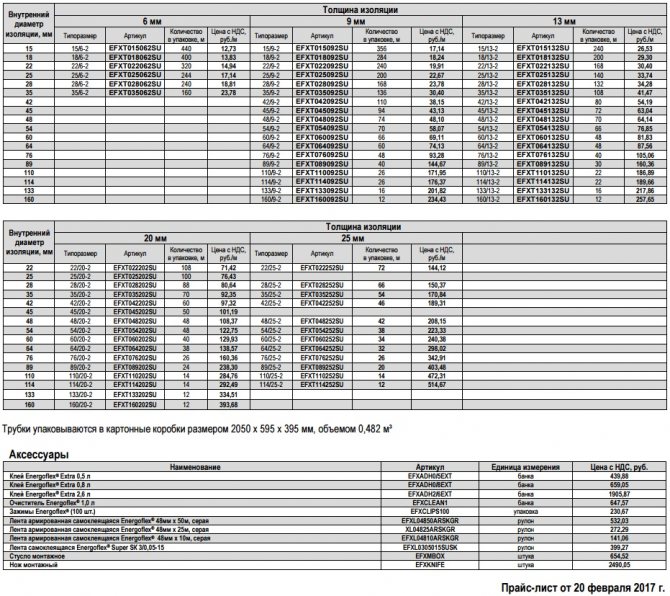

Energoflex Black Star
Specially designed for the insulation of copper pipes in air conditioning systems... It has excellent vapor and waterproofing properties. Provides protection against condensation and corrosion.
They have a smooth inner surface, thanks to which there is no need to use talcum powder when putting on the tubes.
Special sizes have been developed for all types of copper pipes in air conditioning systems. Ideal for insulating cold surfaces.
Energoflex Black Star Split is specially designed for the insulation of air conditioning units
Energoflex Black Star Split
It is used for thermal protection of pipes of air conditioning systems located in the open air.
It is produced in the form of two-meter silver-colored tubes with a polymer coating applied to them, securely welded to the surface of the heat-insulating layer.
Differs in high resistance to aggressive environmental influences, ultraviolet light, water vapor.
Belongs to the group of low-combustible materials (G1). The warranty period is 16 years.
Insulation features
Thermal insulation for pipes "Energoflex" is a flexible thermal insulator that can be used to insulate not only pipelines, but also various surfaces.
Tubes "Energoflex" by extrusion with subsequent foaming with butane-propane are made from high-pressure polyethylene (LDPE). The technological scheme of production determines the appearance of the finished product: it is an elastic tube with many pores filled with air.It is due to the presence of micropores that the insulation of Energoflex pipelines has excellent heat-insulating properties.
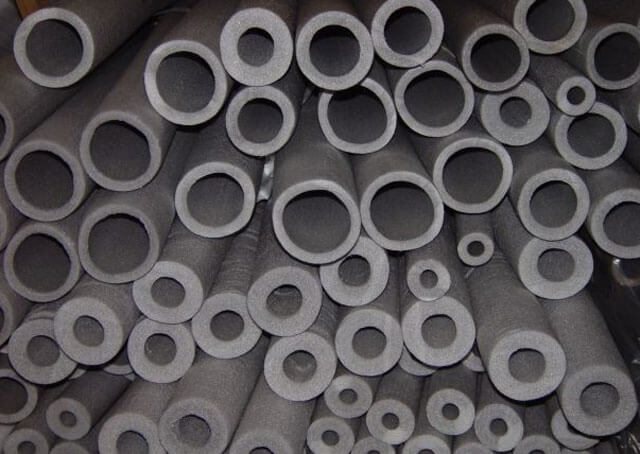

Thermal insulation "Energoflex" is produced in the form:
- Hollow tubesworn on top of the pipes. The diameter of the products is in the range of 18-160 mm. Depending on whether a new pipeline is being installed or an existing one is being insulated, Energoflex insulation for pipes can be put on as a whole or cut along and after installation, glued along the seam.
- Rolls - foil-coated or without foil. In general, foil insulation for pipes is more in demand. With such a heat insulator, you can both cover the floors, and wrap complex or hard-to-reach heat supply or water supply systems.
- Sheets... Flexible thermal insulator plates are used to ensure the operation of fittings or pipeline sections with very large pipe cross-sections.
- Slabs... The products are used for thermal insulation of floors and large areas of communications. Plates "Energoflex" can consist only of foamed polyethylene or include a layer of foil (about
Energoflex Black Star Dact and Black Star Dact Al
It is a roll-up self-adhesive material of black color, designed for heat and sound insulation of pipes in HVAC equipment and air exhaust systems.
Differs in increased elasticity and resistance to mechanical damage, high vapor barrier properties. It is an effective noise isolator and vibration compensator.
The Duct AL marking indicates that one side of the insulation is covered with polished aluminum foil. The form of release is a roll 1.2 m wide, resembling a plastic bag.
Energoflex TP will help you quickly and effectively insulate warm floors and make them even more comfortable
Energoflex Super TP
Designed for thermal insulation of heated floors. Feature of the material: covered with a film, highly resistant to chemical attack, has one-sided foil. Resistant to aggressive environments, prevents overheating of concrete.
Additional materials required for the installation of heat insulators:
Plastic clip. Designed for joining longitudinal seams (technological cuts) after the insulation is put on the pipes. Gray laminated self-adhesive tape. Size 48/50 mm. Red and blue reinforced self-adhesive tapes. Size 48 // 25 mm. Self-adhesive aluminum tape. Size 50/50 mm.
The materials of the same manufacturing company are best suited for energy flex.
Technical Indicators
Manufacturers usually produce three types of insulation:
- in the form of pipes;
- in the form of rolls;
- in the form of slabs.
Specifications depend on the type of material.
So, the pipe insulator for ease of choice when installing pipelines is available in three colors: red, gray, blue. Operating temperature range: –40 ° C to + 95 ° C.
The thermal conductivity of the material is 0.038 W / m • K, the density is 25 kg / cubic meter. Belongs to the class of low-combustible materials, environmentally friendly, it does not contain freon and chlorofluorocarbons.
The roll and plate insulator can be used at temperatures from –40 ° C to + 80 ° C. It is produced with a thickness of 3 to 20 mm, has a density of 20-30 kg / m3. Low-combustible material, resistant to lime, concrete, cement, gypsum. Tensile strength in the transverse direction is 0.1 MPa, in the longitudinal direction - 0.2 MPa. Water absorption of insulation by volume - up to 2%. Noise absorption at frequencies from 200 to 1250 Hz - 25-55%, from 1600 to 3600 Hz - 30-60%.
The elasticity of the tubular insulation Energoflex allows it to return to its original shape after various deformations and guarantees ease of installation.
High strength characteristics provide a long service life of the material - 20-25 years without loss of thermal insulation properties.
The insulator is resistant to chemical environments, due to which it perfectly insulates the sewer pipes underground, protecting them from contact with groundwater.
Does not rot. It does not negatively affect a person, therefore, during installation, there is no need for protective equipment.
Insulation energoflex: tips for use
The first and most important condition for high-quality and safe installation is the production of work only on non-working equipment and non-functioning pipelines.
Their operation is allowed to start no earlier than 24 hours after the completion of the Energoflex thermal insulation installation.
It is installed on a welded pipeline only after the pipe section has cooled.
All work is carried out at a temperature not lower than 5 * C. At a lower level, self-adhesive materials are not able to provide a high-quality seal.
Glue is used to connect the joints. It is applied in an even layer on both surfaces to be glued and cured for 3-5 minutes.
Heat insulator Energofleks: release form and installation
Energoflex is available in several form factors:
- tubes, which are put directly on the pipes, are available in different diameters from 18 to 160 mm, up to 2 m long;
- in the form of rolls - the material is wound on pipes, wrapped around and fastened with a special glue.
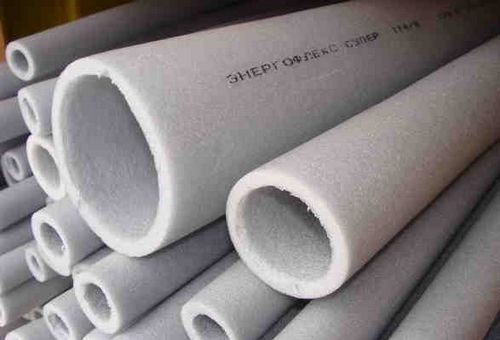

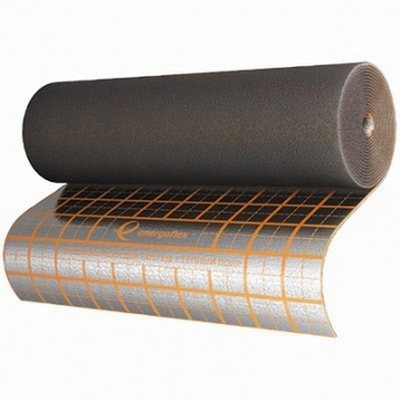

For the installation of Energoflex, in addition to the heat-insulating material itself, it is also necessary to have glue, with the help of which the individual elements of the heat-insulating material are fastened, and the Energoflex tape. The tape is produced in rolls, its function is to close the joint of pipes of glued pipes of insulation (if it is pipe insulation that is used).
Thermal insulation of the pipeline can be carried out both on the assembled pipes, and on individual elements. If the pipeline has not yet been installed, then the installation of the insulation is very simple - the Energoflex tube is simply put on the pipe, the ends of the tubes are glued together, and the joints from above are fastened with a film. In this case, care should be taken that the material does not stretch - this will affect the performance of the heat insulator.
If the pipeline has already been installed, then proceed differently, since the tube can no longer be put on the elements of the pipeline. In this case, pay attention to the line along the Energoflex tube and make an incision along the entire tube. Thus, the tube unfolds and is already put on the tubes in this form, after which the notch line is glued and fastened in the same way as the joints of individual tubes.
Alina Vorobyova, expert
Features of Energoflex installation
During installation, you should pay attention to the following details:
- the ends of the tubes and the cut lines must be degreased and cleaned, free from dust and dirt;
- glue must be applied to both surfaces to be glued, and not to one;
- when installing the insulation, the temperature regime must be observed - the ambient temperature must not exceed 5 ° C;
- before connecting the pipes, you need to stand for at least 5 minutes (apply glue and wait a while, only then glue);
- if the pipeline elements are fastened by welding, Energoflex can be put on only after the welded seams have completely cooled down, and do not keep the insulation too close to the welding place.
In general, Energoflex was and remains an easy-to-use and install material, the improvement of which does not stand still. Already, some manufacturers are producing material for thermal insulation of external pipelines using reinforced foil.
Have you used Energoflex, or is this a new material for you? Have you ever insulated the pipeline yourself? If so, what materials did you use for this, and on which pipeline? Do you plan to deal with the issue of thermal insulation in the near future, or do you think that this is superfluous? If you have something to say about your own experience or want to ask questions, you can do it in the comments to the article.
Outcome
The Energoflex trademark is a development of the young and ambitious Russian company ROLS ISOMARKET. She is one of the few who work according to international standards and the only one that manufactures products not according to industry specifications, but according to the company's own strict standard.This ensures the reference quality of the produced materials.
The company is constantly looking for solutions to improve them. This allows you to be sure that products of the Enegoflex brand are beneficial from any point of view: cost, durability, ease and speed of installation, reliability of thermal insulation and other properties.
